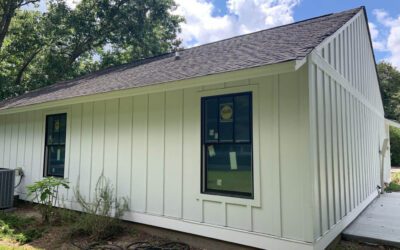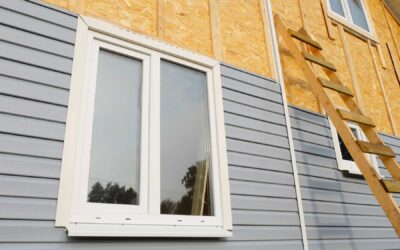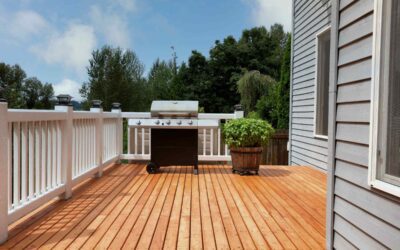When it comes to picking the right veneer for your home, understanding the plank siding types available can make all the difference. These plank siding types not only protect your home but also improve its appearance, boosting curb appeal and potential resale value. Homeowners have a variety of plank siding options to choose from:
- Horizontal Siding: Traditional lap, Dutch lap, and shiplap.
- Vertical Siding: Board and batten, vertical shiplap.
- Shake and Shingle Siding: Staggered shake, straight edge shingle.
Each style offers distinct looks and benefits, contributing to your home’s overall aesthetic.
Choosing the right home siding materials is vital for both protection and aesthetics. Siding forms the first line of defense against the elements and creates a lasting first impression. Quality siding can transform a home’s exterior, making it appealing and timeless.
At Contract Exteriors, we understand the importance of selecting the right siding for your home. We are committed to providing high-quality workmanship and reliable solutions that meet the unique needs of coastal South Carolina homeowners. With our expertise, you can enjoy peace of mind knowing your home is in capable hands.

Types of Plank Siding
When it comes to plank siding types, there are several options to consider, each offering unique styles and benefits. Let’s break down the main categories: horizontal siding, vertical siding, and shake and shingle siding.
Horizontal Siding
Horizontal siding is a classic choice that suits many architectural styles. It includes:
- Traditional Lap Siding: Known for its smooth appearance, this versatile option fits both modern and historical homes. It’s a timeless choice that offers a clean, uniform look.
- Dutch Lap Siding: This style features a concave face and a shadow line that adds depth and architectural interest. It’s perfect for those seeking a traditional look with a twist.
- Beaded Lap Siding: With a beaded edge for added visual interest, this style often appeals to those restoring historical homes or seeking a vintage feel.
- Log Lap Siding: Ideal for a rustic, log cabin aesthetic, log lap siding offers better insulation and a cozy, woodsy charm.
- Clapboard Siding: Popular in New England, clapboard siding has a wedge shape with an even profile, providing a classic and neat appearance.
- Shiplap Siding: Known for its sleek lines and tight joints, shiplap siding is favored for its minimal reveal and can be installed both horizontally and vertically for a contemporary look.
Vertical Siding
Vertical siding adds a distinctive look to your home’s exterior and includes:
- Board and Batten Siding: This style involves wide boards with narrow battens covering the seams, adding depth and dimension. It’s popular in modern farmhouse and rustic designs.
- Vertical Shiplap Siding: Similar to horizontal shiplap, this style offers a weatherproof seal and blends contemporary design with classic charm.
- Tongue and Groove Siding: Known for its polished appearance and seamless surface, tongue and groove siding offers a modern look with strong interlocking design for excellent protection.
Shake and Shingle Siding
Shake and shingle siding provide a charming and textured look:
- Split Shake Siding: With a rustic appearance and rough texture, split shake siding is perfect for achieving a woodsy charm.
- Staggered Shake Siding: This style adds visual interest with its dynamic, relaxed vibe, making it ideal for cottages and coastal homes.
- Straight Edge Shingle Siding: Offering a clean, uniform look, this style suits both traditional and contemporary designs.
- Scalloped Shingle Siding: Also known as fish scale shingles, this decorative style is often associated with Victorian homes, providing a unique texture and historic feel.
Each of these plank siding types offers distinct advantages, allowing homeowners to select the perfect style to improve their home’s exterior. Whether you’re aiming for a modern farmhouse look or a classic Victorian charm, there’s a plank siding type that can meet your needs.
Horizontal Plank Siding Types
When considering horizontal plank siding types, each option brings its own unique flair and functional benefits to your home’s exterior.
Traditional Lap Siding
Traditional lap siding is a classic choice, known for its smooth appearance and versatility. It seamlessly fits both modern and historical homes, making it a timeless staple in siding. Its overlapping design not only provides a clean, uniform look but also offers excellent weather protection.
Dutch Lap Siding
Dutch lap siding stands out with its concave face and distinctive shadow line. This design adds depth and architectural interest to your home, creating a traditional look with a modern twist. It’s perfect for homeowners who want a bit more character without straying too far from classic styles.
Beaded Lap Siding
For those seeking a touch of vintage charm, beaded lap siding is an excellent choice. Each board features a beaded edge, adding visual interest and a sense of craftsmanship. This style is often favored in historical restorations and homes aiming for a cozy, cottage feel.
Log Lap Siding
Accept a rustic look with log lap siding, which mimics the appearance of natural logs. This style not only provides a woodsy charm but also offers better insulation compared to traditional log construction. It’s ideal for those dreaming of a log cabin aesthetic.
Clapboard Siding
Popular in New England, clapboard siding is characterized by its wedge shape and even profile. This style offers a classic and neat appearance, making it a go-to option for homes looking to capture a timeless, coastal vibe.
Shiplap Siding
Shiplap siding is celebrated for its tight joints and minimal reveal, resulting in sleek lines that suit contemporary designs. It can be installed both horizontally and vertically, offering flexibility in achieving the desired look. Its weatherproof seal makes it a practical choice for various climates.
Each of these horizontal plank siding types offers something unique, allowing you to tailor your home’s exterior to your personal taste and architectural style. Whether you’re drawn to the classic appeal of traditional lap or the modern sleekness of shiplap, there’s a perfect fit for every home.
Vertical Plank Siding Types
Vertical plank siding offers a distinct look that can improve the height and modern feel of your home. Let’s explore some popular options:
Board and Batten Siding
Board and batten siding is a favorite for those who love the modern farmhouse or rustic aesthetic. This style features wide boards with narrow battens covering the seams, creating a striking pattern of depth and dimension.
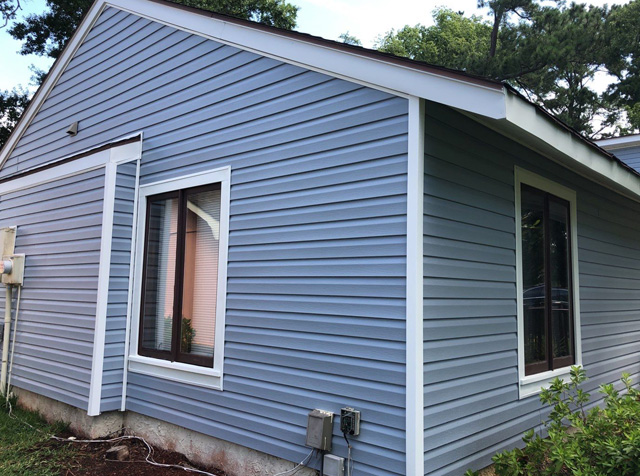
You can adjust the space between battens to achieve different looks. Wider gaps lean traditional, while narrower ones bring a contemporary vibe. This siding type not only adds visual interest but also offers excellent durability against the elements.
Shiplap Siding (Vertical)
Shiplap siding has gained popularity due to its weatherproof seal and clean, minimalist lines. When installed vertically, it gives homes a contemporary design with a hint of classic charm.

The overlapping joints create a tight seal, protecting your home from moisture and drafts. It’s a versatile choice that works well for both accents and full exteriors, offering a sleek and stylish finish.
Tongue and Groove Siding
For a polished appearance and seamless surface, consider tongue and groove siding. This style involves boards with a tongue on one edge and a groove on the other, allowing them to fit together snugly.
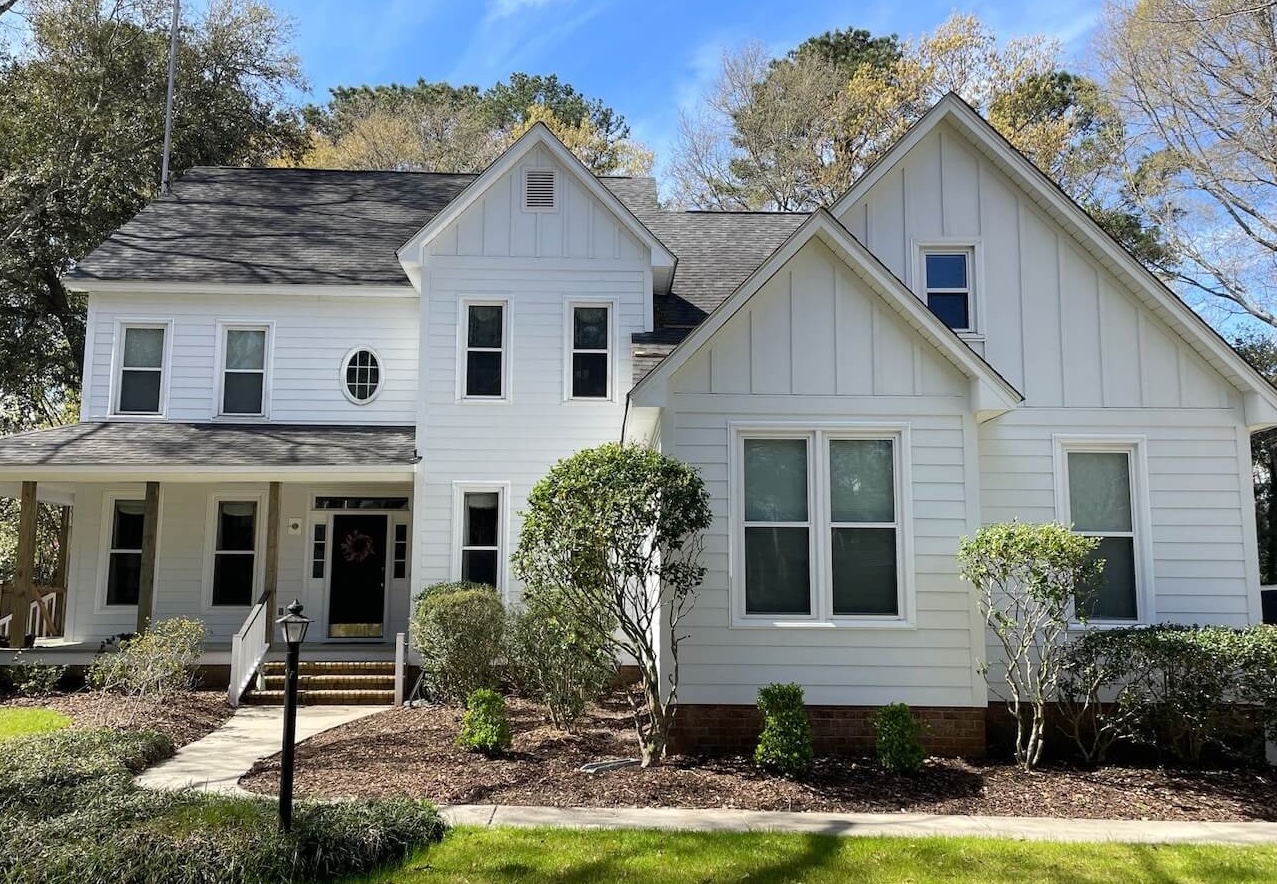
The result is a smooth, continuous surface that is both visually appealing and highly durable. It’s perfect for achieving a modern look with a touch of elegance, making it ideal for contemporary homes.
Each of these vertical plank siding types brings a unique character to your home, whether you’re aiming for the rustic charm of board and batten, the sleek lines of shiplap, or the refined finish of tongue and groove.
Shake and Shingle Siding Types
Shake and shingle siding offers a charming and rustic appeal for your home, with various styles to suit different tastes. Let’s explore the different types:
Split Shake Siding
Split shake siding is perfect for those seeking a rustic appearance with a rough texture. Each shake is split from a wood block, usually cedar, giving it a natural, handcrafted look. This style is ideal for homes that want to accept a woodsy charm reminiscent of a cozy cabin in the woods.
Staggered Shake Siding
For a more dynamic appearance, consider staggered shake siding. This style features shakes of varying lengths, creating an uneven edge that adds visual interest and a relaxed vibe. It’s a great choice for cottages or coastal homes that want to exude a playful, informal atmosphere.
Straight Edge Shingle Siding
If you prefer a clean appearance with a uniform look, straight edge shingle siding is the way to go. Each shingle is precisely cut, allowing them to fit together neatly. This style offers a traditional and contemporary appeal, making it versatile for various architectural designs, from classic to modern.
Scalloped Shingle Siding
For a decorative look that stands out, consider scalloped shingle siding, also known as fish scale shingles. With their rounded edges, they add a unique texture and are often associated with Victorian homes. This style draws the eye and adds a touch of whimsy and history to your home’s exterior.
Each of these shake and shingle siding types provides a distinct look and feel, allowing you to express your personal style while enhancing your home’s curb appeal. Whether you lean towards the rugged beauty of split shakes, the playful staggered look, the neat lines of straight edge shingles, or the decorative charm of scalloped shingles, there’s an option that will bring your vision to life.
Benefits of Different Plank Siding Materials
When choosing plank siding for your home, understanding the benefits and drawbacks of each material is crucial. Let’s explore the main options: wood, vinyl, fiber cement, and engineered wood.
Wood Siding
Natural Look: Wood siding offers a classic, natural appearance that many homeowners love. Its warm and authentic charm can improve any architectural style.
Maintenance: However, wood requires regular maintenance. You’ll need to paint or stain it periodically to protect it from the elements and keep it looking fresh.
Susceptibility to Elements: Wood is vulnerable to rot, termites, and weather damage. Proper care is essential to maintain its longevity.
Vinyl Siding
Low Maintenance: Vinyl siding is a popular choice due to its low maintenance needs. It doesn’t require painting, and cleaning is simple with just soap and water.
Cost-Effective: It’s an affordable option compared to other materials, making it attractive for budget-conscious homeowners.
Durability Issues: While vinyl is resistant to rot and insects, it can crack or warp under extreme weather conditions. It may not be the best choice for areas prone to severe weather.
Fiber Cement Siding
Durability: Fiber cement siding is known for its incredible durability. It withstands harsh weather, fire, and pests, making it an excellent choice for long-lasting protection.
Low Maintenance: Like vinyl, fiber cement requires minimal upkeep. Its color lasts for years, reducing the need for frequent repainting.
Fire and Moisture Resistance: One of its standout features is its resistance to fire and moisture, providing peace of mind for homeowners in wildfire-prone areas.
Engineered Wood Siding
Natural Wood Look: Engineered wood provides the appearance of natural wood, often fooling the untrained eye. It’s a great alternative if you love the wood look but want added benefits.
Performance-Enhancing Additives: This siding type includes additives that improve its performance, making it more resistant to pests and rot than traditional wood.
Durability Concerns: Despite these improvements, engineered wood can still swell with moisture if not properly installed and maintained. Regular inspections are key to preventing issues.
Choosing the right plank siding material depends on your priorities, whether it’s aesthetics, maintenance, or resistance to elements. Each option offers unique benefits, so consider what matters most for your home.
Frequently Asked Questions about Plank Siding Types
What are the three major types of board siding?
When it comes to board siding, homeowners typically consider three main types: vinyl, engineered wood, and fiber cement. Each offers distinct advantages and potential drawbacks, making it crucial to align your choice with your needs and climate.
- Vinyl Siding: Known for its affordability, vinyl is a low-maintenance option that resists rot and insects. However, extreme weather can cause it to warp or crack, so it might not be ideal for areas with severe conditions.
- Engineered Wood Siding: This type mimics the look of natural wood but includes performance-enhancing additives that improve its resilience against pests and rot. Despite these benefits, it may swell if exposed to long-term moisture, so proper installation and maintenance are vital.
- Fiber Cement Siding: A standout for its durability, fiber cement resists fire, moisture, and pests. It’s a reliable choice for those seeking long-lasting protection, especially in wildfire-prone areas.
What is the downside to a Hardie board?
Hardie board, or fiber cement siding by James Hardie, is renowned for its durability and aesthetic appeal. However, it does come with some downsides:
- Upfront Costs: The initial investment for Hardie board is higher compared to other materials like vinyl. This could be a consideration if budget constraints are a factor.
- Heavier Material: Hardie board is heavier than alternatives, which may lead to increased labor costs during installation.
- Specialized Installation: Proper installation is crucial to maximize the benefits of Hardie board. It’s often recommended to hire professionals to ensure the siding is installed correctly, which can add to the overall expense.
Are there different grades of HardiePlank siding?
Yes, HardiePlank siding offers different grades and finishes to suit various aesthetic preferences and performance needs:
- Select Cedarmill: This option provides a textured finish that mimics the natural look of cedar wood, perfect for those seeking a rustic charm.
- Smooth Finish: Ideal for a sleek, modern appearance, the smooth finish offers a clean look that complements contemporary home designs.
- Lap Siding Profiles: HardiePlank includes several lap siding profiles, allowing homeowners to choose styles like traditional lap or beaded lap to match their desired exterior look.
Each grade and finish of HardiePlank siding is designed to offer durability and aesthetic appeal, making it a versatile choice for enhancing your home’s exterior.
Conclusion
At Contract Exteriors, we understand that choosing the right siding for your home is a significant decision. Our commitment to quality workmanship ensures that you receive not only beautiful but also durable solutions that stand the test of time. With our experience in home remodeling, we take pride in offering top-notch siding installation services, particularly with James Hardie siding, which is known for its strength and aesthetic appeal.
Our focus on customer communication sets us apart. We believe in keeping you informed at every step, ensuring that your vision comes to life with precision and care. Whether you’re leaning towards traditional lap siding for a classic look or exploring the modern appeal of fiber cement siding, our team is here to guide you through the process.
We are proud to be recognized as a James Hardie Elite Preferred Contractor, a testament to our dedication to excellence and customer satisfaction. Our awards and certifications reflect our commitment to providing the best for our clients.
If you’re considering a siding upgrade, we invite you to explore the possibilities with us. Visit our James Hardie Board Siding page to learn more about how we can improve your home’s exterior with durable and stylish solutions custom to your needs.
At Contract Exteriors, your home improvement journey is our priority. Let’s build something great together.

